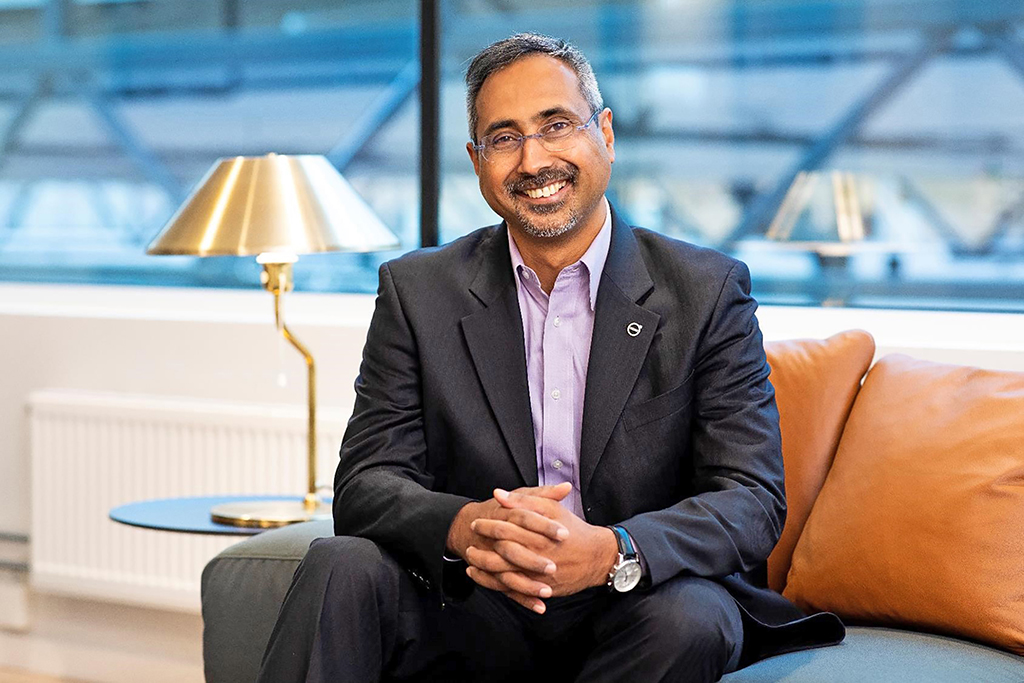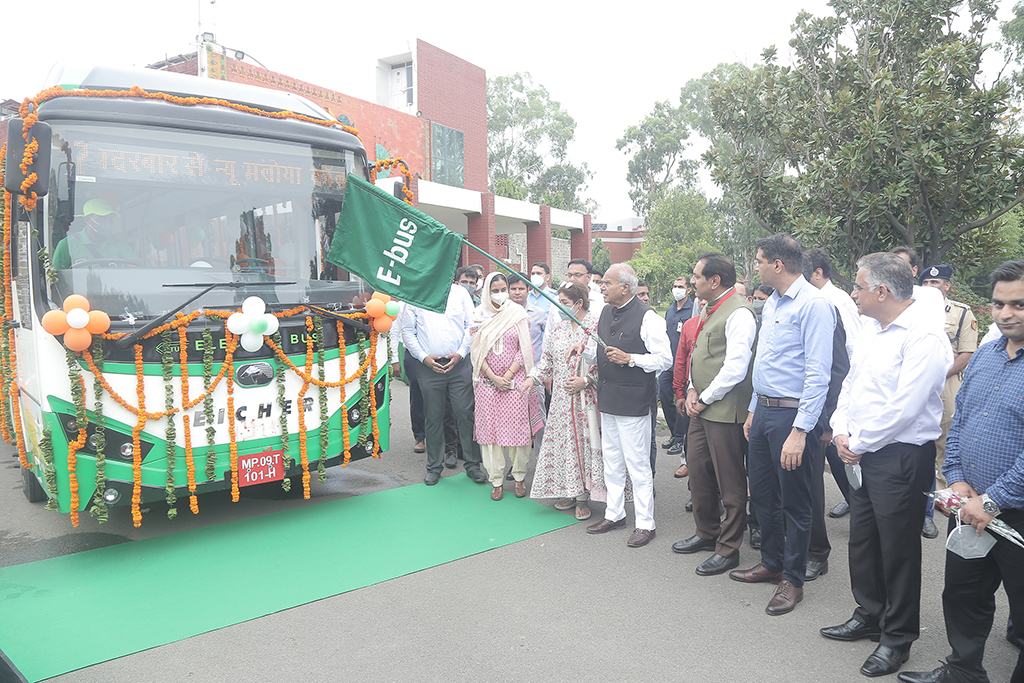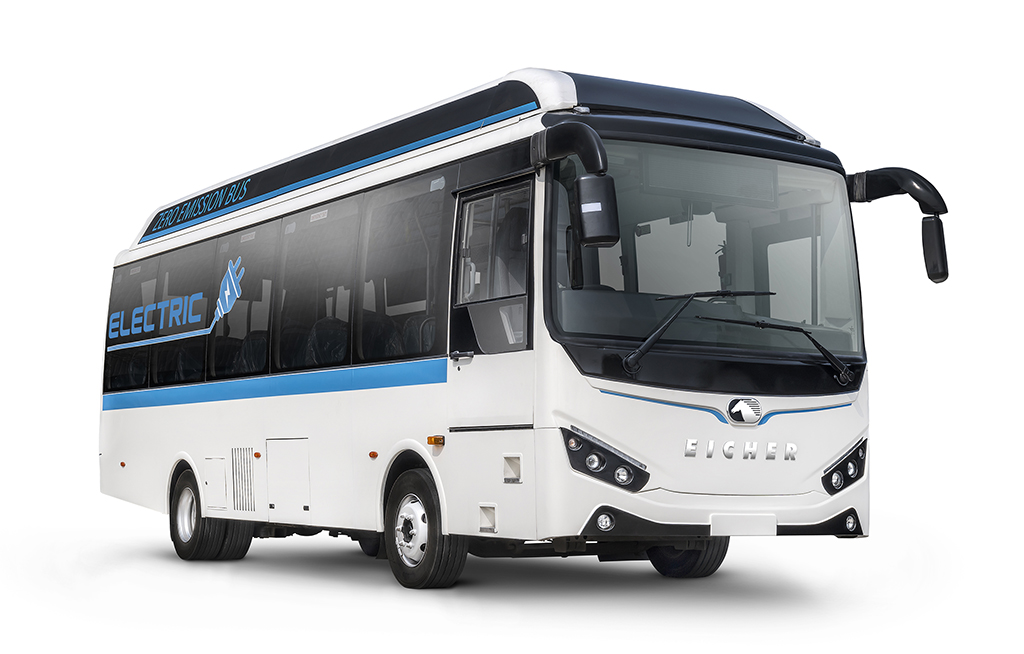VECV is prepared to extend its reputation in the e-bus industry while keeping an eye on sensible, long-term ‘zero emission’ objectives, says Akash Passey, President Bus Division, VECV in this exclusive interaction with Rajesh Rajgor

How are industry emotions currently, and especially in the e-bus market, given that the bus segment was among the worst hit during the pandemic? How does VE Electro Mobility want to change things? The market is recovering. Naturally, it will take a while for things to return to normal, but the situation has significantly improved since the pandemic era, which is positive. The light and medium duty buses have started to return since March or April. From August through September, there has been a little increase in long-distance bus traffic too. By integrating the Volvo Eicher brands, we were able to better focus on the transportation industry and contribute significantly to each of India’s major market categories. Our market shares have grown, and customers now have more faith in Volvo Eicher brands.
Could you please update us on the new subsidiary, VE Electro Mobility, between Volvo and Eicher Motors?
We have seen that the government has placed a significant and important emphasis on electric vehicles during the past four to five years. Having said that, we have recently taken a significant step into the electric sector compared to the previous year. City transportation is currently, and justifiably so, the main source of volume generation for Volvo Eicher Commercial Vehicles in India. As a result, the same trend is still there in India in terms of price points or new business models that are quite cost-conscious like the rest of the market. Consequently, introducing products under the Eicher brand has been the most sensible course of action.
The role of an OEM has significantly evolved from simply producing a product to operating it in a Gross Cost Contract Model (GCC), which entails operating the bus, owning it for a longer period of time, charging per kilometre, and being in charge of charging for all other costs, including maintenance. Like the rest of the industry, we have established a mobility arm called VE Electro Mobility in order to operate buses efficiently on our own wherever possible. This arm has been operational since the beginning of this year and will likely be the one that uses electric mobility to operate the majority of our electric footprint.

Would you also want to elaborate on the new platforms that VE Electro Mobility is working on?
Our objective with our mobility arm, at least for the time being, is to keep it just as a company that delivers mobility. Different companies take different approaches to how they position, their mobility arms. We continue to manufacture products in the parent firm, VE Commercial Vehicles, whether we are designing them or producing them. Currently, our primary focus on the product platforms in our original company (VE Commercial Vehicles) is what the market demands – between 9 and 12 metres in length. These are the two product platforms on which we are currently concentrating on electrified public transportation. But today, it encompasses much more. When discussing automobiles that operate on electromobility, it goes beyond the actual product. It also involves using the product responsibly and operating it.
There is more accountability for the product’s cost, upkeep, and fulfilment of client expectations, among other things. All of this necessitates a digital transformation roadmap that is highly relevant. To improve our ability to access and read in real time, we have increased our digital footprint. The money is in detail of performance of the vehicle and all other parameters while carrying passengers through our management of the VE Electro Mobility operations. So, to answer the specifics of your question, we are working with STUs across the country. Recently, 40 units of Eicher Skyline Pro E 3012H electric buses have been delivered to Chandigarh Transport Undertaking (CTU).
What is your take on the Gross Cost Contract (GCC) model applied by STUs and a few private players in fast-tracking the EV bus penetration and how beneficial would it be to the OEMs involved?
This is a really good question, and of course this is a new business model. I am aware of this since throughout my time working for the Volvo Group in various regions of the world, we have discussed the arrival of this type of model. But despite my efforts to introduce electric buses on behalf of Volvo throughout the world, there hasn’t been a model like that. With the Indian government, the GCC model becomes crucial to the overall electric strategy since it offers a good fail-safe path. Electric buses are expensive, and funding is a problem in several states. From that perspective, a GCC model aids such cities or states in introducing cutting-edge or eco-friendly technology. At Volvo Eicher, we believe that this is a strong model and a good first step that can improve the adoption of EVs over the next few years.
However, this is not a model that can last for a very long time on its own. In India, there are numerous state corporations and countless bus operators’ associations. They should eventually be in charge of driving the buses. Today, however, in the electric sector, it is we who really operate the buses, often outsourcing them to a different operator. However, we bear primary accountability. Therefore, I believe that this model has to be improved in the long run in order for us to return to our primary job of creating these environment friendly buses. This model needs to motivate operators and financial aggregators to make the major investments.

What do you believe is the most effective strategy to guarantee that the Indian market is prepared in terms of the charging infrastructure?
I believe that the government has done a wonderful job from the beginning. If you could make the following suggestions, it would be great. First off, notwithstanding the good work that has been done, I would propose that governments, whether at the state or national level, adopt a more comprehensive strategy. For exampe, power is produced today via possibly not the cleanest sources. So, how do we go to the point of origin where we generate clean energy right away, which then appropriately impacts and drives a clean electric wave? That would be one thing to consider.
The second issue is that there will be enormous power requirements, in our opinion. I believe that getting large power loads on time can occasionally be difficult in cities. Operators would want quick and easy access to large amounts of power. The third would be that standardisation should be sought right away at charge sites where there is charging infrastructure. A city depot X can contain buses from two different vendors. Both likely will use separate infrastructure for their charge points, one of which may be a Volvo Eicher and the other a different brand.
When you go to a fuel pump, you can select petrol, diesel, or compressed natural gas, and it can go into any type of car without a problem.
Today, I believe that is where we need to advance to the next stage, when the responsibility for power and charging must be assumed by a different party or by the user, in this case, occasionally the government so that it is standardized across vehicles. Of course, we are not the finest charging experts, but we are bringing in the most effective charging suppliers as third parties mostly as it is the requirement of the tender. The fourth suggestion is this, that it is a task that might probably be delegated directly to big charging businesses, of which there are at least four or five already established around the nation.
Is the Indian market moving in the right direction in terms of EV safety regulations and standards? How does VECV lead by example in terms of safety?
I believe India has already established international safety standards that are extremely contemporary, and we adhere to those. The challenge comes if you cut corners. Volvo is a global ambassador of vehicle safety, and together with Eicher, a company renowned for dependability, we create sustainable products. We have a solid history in the bus sector, but so have others. And I believe that everyone is paying attention to this because it comes up frequently in conversations about safety at conferences and seminars. Engineers, users, and the entire ecosystem will all need to learn more about EV safety as we advance if we are to ensure that the sector reaches its sustainable goal.
While we are on the topic of safety, when will we start to see battery modules and cells manufactured in India? What is your take on it?
I believe that right now, each manufacturer is attempting to localise the electric technology through a sizeable number of vendors. Volumes are necessary to localise more quickly, which is one of the issues I have raised with the administration. You typically do not obtain the highest quality or efficiency out of lowest price tenders. Even though the government has incentive programmes in place or there are other programmes, the biggest impact on developing local infrastructure is the lack of large vendor base and large vendor base comes with the OEMs that have desirable volume. If the volumes then tend to go to one or two players, it delays the development of the entire ecosystem.
So, I believe that will have a big impact. On the other side, all of us have set up on it and begun that effort, or at least the major manufacturers have. Particularly when it comes to batteries, I think that’s a significant investment. One or two significant business entities in India are reportedly planning to make those investments. That is not something that is readily available, in my opinion. This will require some time. However, as everyone today imports cell modules and repairs their own cells, technology is also making its way to India. Therefore, I believe that would proceed much more quickly, but to have full integration of the full batteries, etc. will take couple of more years.
What are your plans for EV bus exports?
I believe that at this point we have set out to establish a more reliable presence in India. That will continue to be our top priority. We will, of course, consider any opportunities that make sense in terms of volume profitability and sustainability, outside India later. So, we are really transparent. But for the time being, the emphasis will be on the domestic market because there is a lot of demand there and a growing industry can already be seen in India.
What kind of market position do you anticipate having for the VECV EV division by 2025 in India?
We cannot be explicit about our plans for future volumes. To address your question, though, I would answer that everyone is still learning. Although having an order is opportune, you also need to carry it out. Due to the fact that this business model is new, new vendor bases and technologies have emerged. Every aspect of life is changing. Therefore, the transformation is not just in technology but also in culture. You need to approach it differently than you would for a regular bus. It also involves picking up a few fresh skill-sets. Personally, I believe that within the next couple of years, the two-wheeler and three-wheeler segments will see considerable advancements in electric technology, with buses following.
The staff segment is our next major push, on which we are currently concentrating. This is after we have already entered the city segment, which is our learning curve from both our products and our mobility firm. The easiest way to describe it over the long run is that ICE and CNG engines will eventually lose market share to electric vehicles. Although it will be a long road, it is one that is clearly apparent in the near future. Everything to do with last-mile connectivity, city transportation, public transportation, or truck side light cargo mobility is unquestionably moving in the direction of the electric, where we at VECV will become a dominating participant with a sustainable business strategy.
Interestingly, with clean affordable technology, comfort and convenience more people should take public transports and hopefully we are in the right direction as far as improving public transport is concerned. As I frequently point out, India has the lowest bus usage per thousand people in the world. Therefore, public transportation using clean electric vehicles will continue to grow. However, more buses are also required because switching from diesel to electric technology won’t eliminate traffic congestion due to the sheer number of cars on the road.
I believe that in addition to switching to clean technology, we all need to look at ways to improve public transportation so that more people may use buses instead of other forms of transportation. It will be advantageous for both parties if it occurs because of electricity and better technologies. Being able to offer better bodies, better technology, and better comfort is already possible because to the fact that most electric buses are air conditioned, which is unusual for regular public transportation buses. Therefore, there is a fundamental shift occurring not only in technology but also in terms of comfort, safety, and product advancements that will benefit all of us.